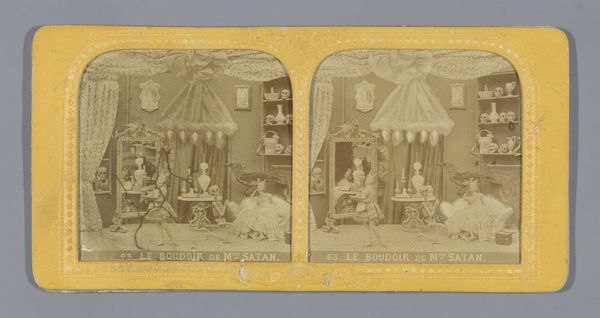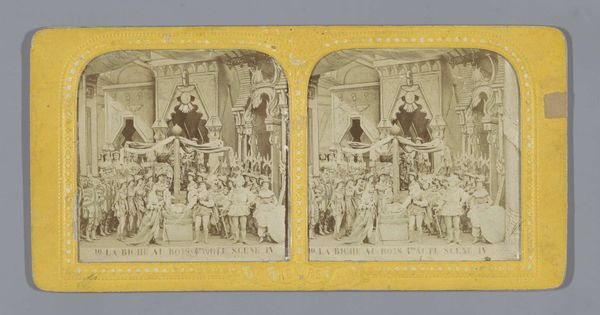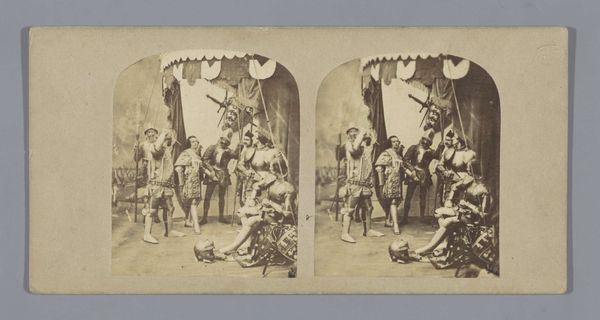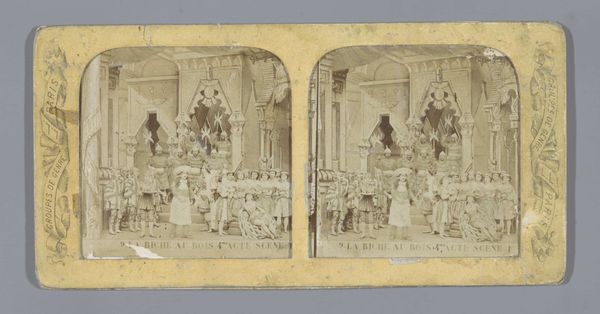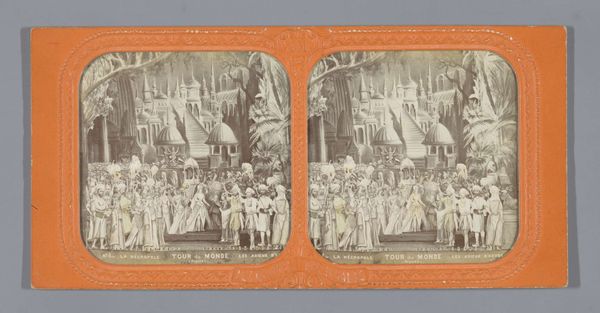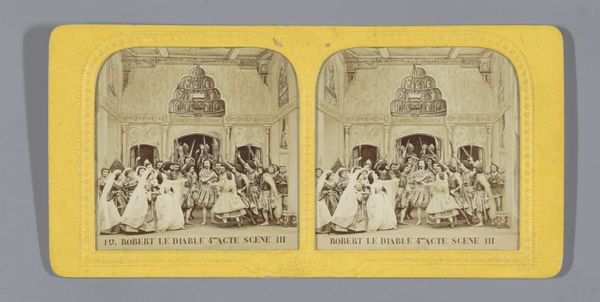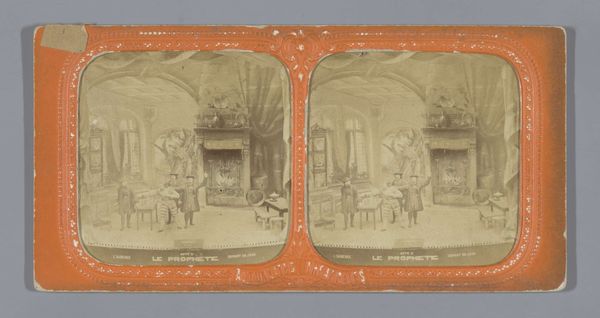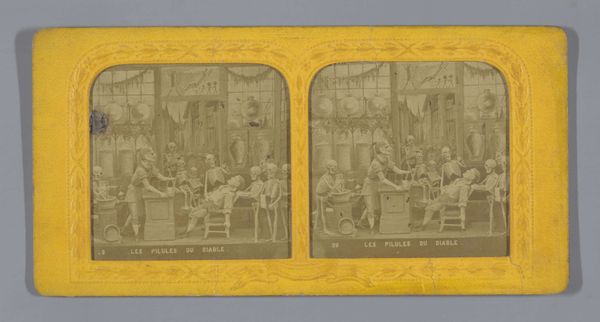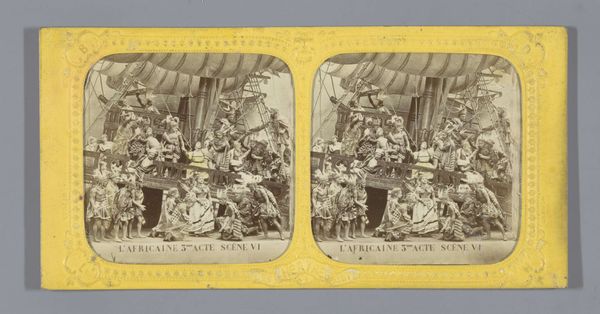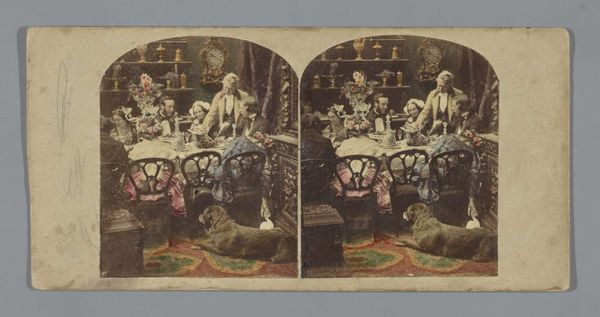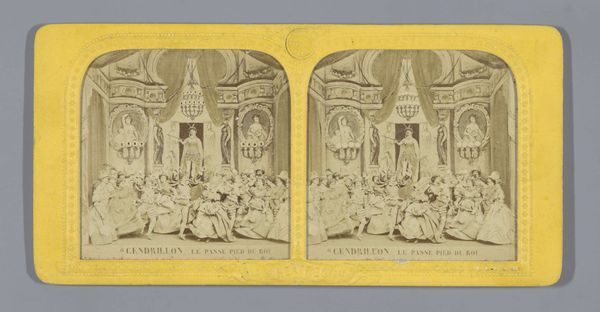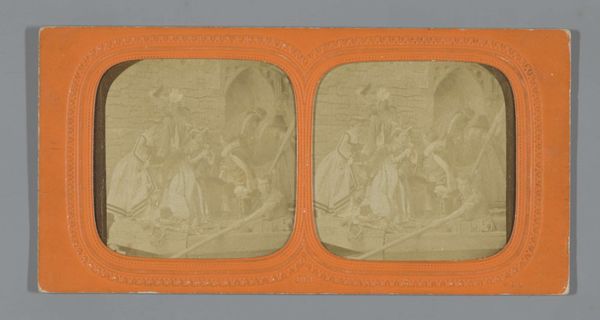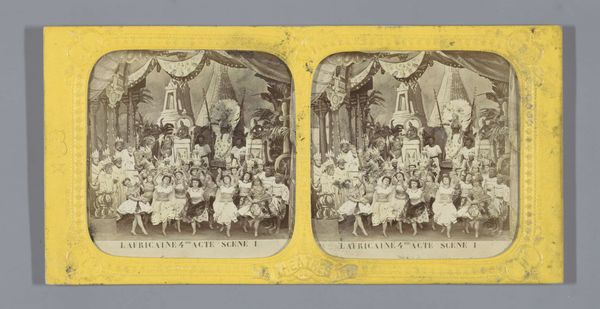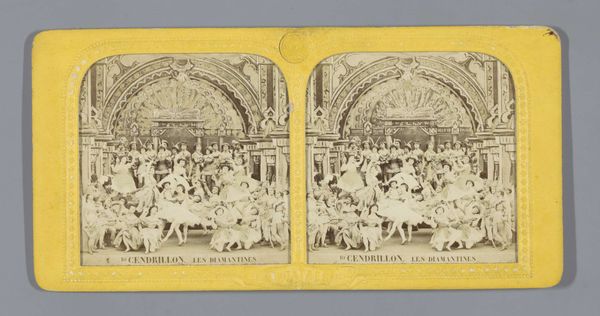
print, photography
#
portrait
#
narrative-art
# print
#
photography
#
history-painting
Dimensions: height 87 mm, width 174 mm
Copyright: Rijks Museum: Open Domain
Editor: Here we have a stereoscopic photograph from between 1873 and 1874, titled "Derde bedrijf, eerste scène van L'Africaine" – that’s "Act Three, Scene One of L'Africaine". It presents a tableau, full of figures on what appears to be a ship deck. It looks so posed and deliberate. What can you tell us about the significance of this staging, in terms of how it reflects the historical context of its time? Curator: Well, what strikes me immediately is the construction of race and representation here. The opera "L'Africaine" itself, and consequently this photographic depiction, became a vehicle for 19th-century European fantasies about Africa and its people. The elaborate set, costumes, and staging naturalize a colonial perspective. What do you observe about the power dynamics visualized here? Editor: I notice the distinct separation of the figures into two groups: a higher class above and a seated group in front. The costumes and setting suggest some level of imposed hierarchy. Were such productions common? Curator: Yes, absolutely. These photographic reproductions of opera scenes gained popularity in the 1870s. They functioned not only as documentation but also as promotional tools. By circulating images like these, operas like "L'Africaine" shaped the European public’s understanding – and misunderstanding – of other cultures. Who was the intended audience for this type of photograph, and what role do you think photography played at the time? Editor: The middle and upper classes, surely, people who had the money for stereoscopes. I guess it reinforced their worldview; popularizing cultural productions to be seen on the family stereoscope sounds like it allowed such representations to settle deep in the cultural understanding. I had never thought about that… it's interesting how photography could spread not just information, but ideologies, too! Curator: Precisely! That's how imagery performs power in the public sphere. We see these echoes repeated time and again across the history of photography and the visual arts.
Comments
No comments
Be the first to comment and join the conversation on the ultimate creative platform.
